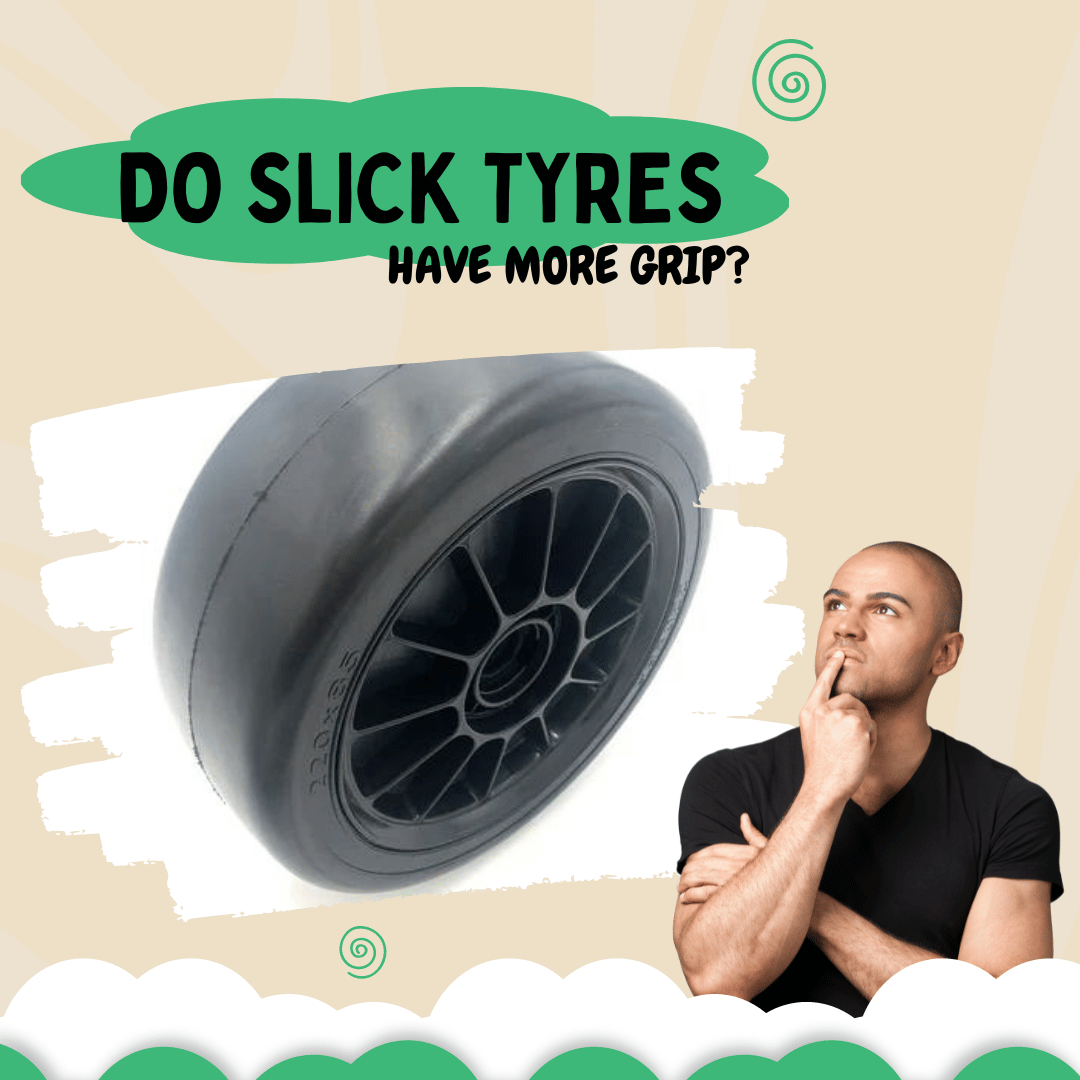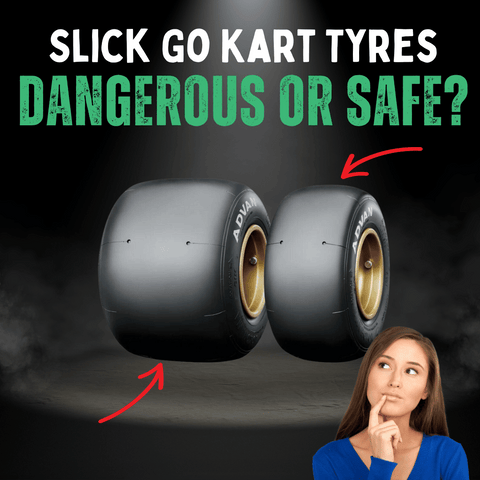
Updated: 14.05.25
Slick tyres are a key component in motorsports, maximising grip for high-speed performance. But do they really offer more grip than regular tyres? Let’s explore their benefits, limitations, and best uses to understand their role in racing and beyond.
1. What Are Slick Tyres?
Slick tyres, designed for racing, feature a smooth, tread-free surface to maximise road contact. This enhances traction, steering, and braking on dry surfaces, making them ideal for motorsports.
Related: Should I Warm My Go-Kart Tyres Like F1 Drivers Do?
2. Why Slick Tyres Grip Better on Dry Surfaces
Slick tyres provide superior grip on dry roads due to their larger contact area. Without grooves, they use softer rubber compounds for maximum adhesion, improving acceleration, cornering, and braking.
Related: Are Slick Go-Kart Tyres Faster?
3. Benefits of Slick Tyres
- Enhanced Traction: Larger contact patch offers superior grip on dry surfaces, improving control and stability.
- Better Heat Dissipation: Even heat distribution reduces overheating, maintaining performance during races.
Related: Slick Go-Kart Tyres: Dangerous or Safe?
4. Limitations in Wet Conditions
Slick tyres struggle in wet conditions due to aquaplaning. Without tread to channel water, traction drops significantly, making grooved tyres safer for variable weather.
5. Slick Tyres vs. Regular Tyres
Slick tyres excel in dry racing environments, while regular tyres balance grip, comfort, and durability across all conditions. Choose based on your driving needs.
| Feature | Slick Tyres | Regular Tyres |
|---|---|---|
| Tread | Smooth, no tread | Grooved for versatility |
| Dry Grip | High | Moderate |
| Wet Grip | Low | High |
| Heat Dissipation | High | Moderate |
| Best Use | Racing, track days | Everyday driving |
6. Best Uses for Slick Tyres
Slick tyres are ideal for racing circuits and track days where dry conditions are controlled. They’re not suitable for public roads due to poor wet performance.
Explore our drift karts for high-performance racing fun!
7. Advances in Slick Tyre Technology
Modern slick tyres use advanced rubber compounds and heat management tech to enhance grip and durability, pushing motorsport performance to new heights.
8. Drifting with Slick Tyres
Drifting on slick tyres is possible but challenging due to their all-or-nothing grip. Semi-slick tyres, with balanced grip and slip, are often preferred for drifting.
Related: How to Drift in a Go-Kart
Conclusion
Slick tyres offer unmatched grip on dry racing surfaces due to their smooth design and soft compounds. However, their poor wet performance limits them to controlled environments like tracks. Choose slick tyres for racing and grooved tyres for everyday versatility.
Frequently Asked Questions
Do slick tyres have more grip than regular tyres?
Yes, slick tyres provide more grip on dry surfaces due to their larger contact area, but they lose traction in wet conditions.
Why are slick tyres unsuitable for public roads?
Slick tyres lack tread, causing aquaplaning in wet conditions, making them unsafe for variable weather on public roads.
What are slick tyres made of?
Slick tyres use soft rubber compounds for flexibility and maximum grip on dry racing surfaces.
Can I drift with slick tyres?
Drifting on slick tyres is possible but difficult due to their high grip. Semi-slick tyres are better for controlled drifting.
How have slick tyres improved in 2025?
Advances in rubber compounds and heat management have enhanced slick tyre grip, durability, and performance for motorsports.
Get in Touch 🚀
Loved our article on “Do Slick Tyres Have More Grip? Exploring Performance and Safety”? Craving more motorsport tips?
We’re here for all your kids’ ride-on toy and racing questions! 🚗💨
Explore more at RiiRoo.com.
Or, chat with us via Live Chat for instant answers!









Share:
4 Key Symptoms Of Over-Inflated Tyres
Comparing Eva Tyres vs Rubber Tyres: Pros, Cons, and Performance